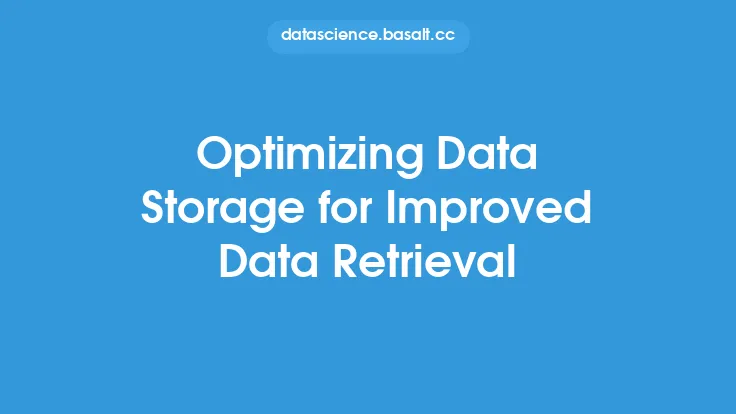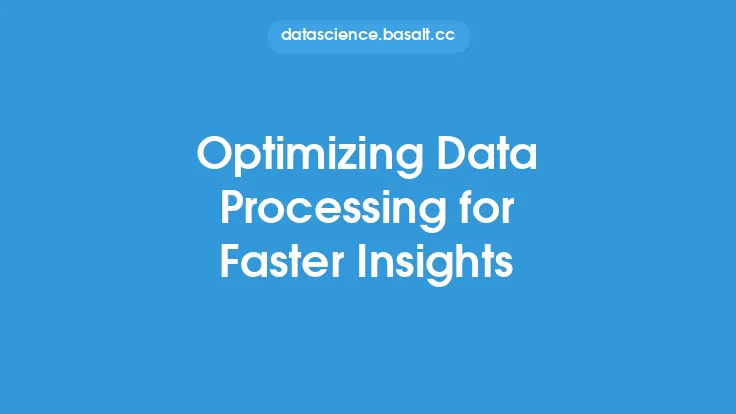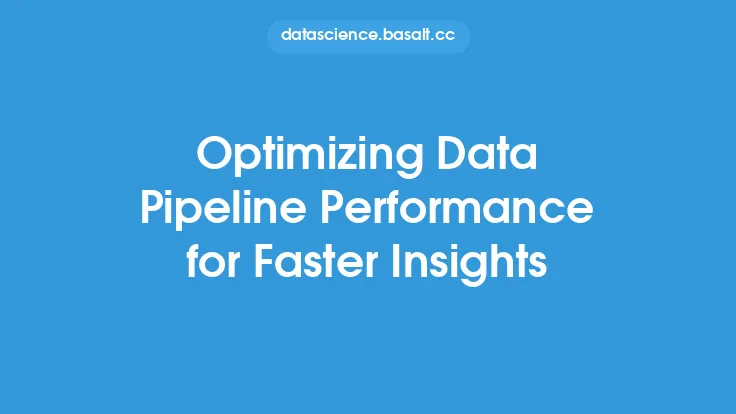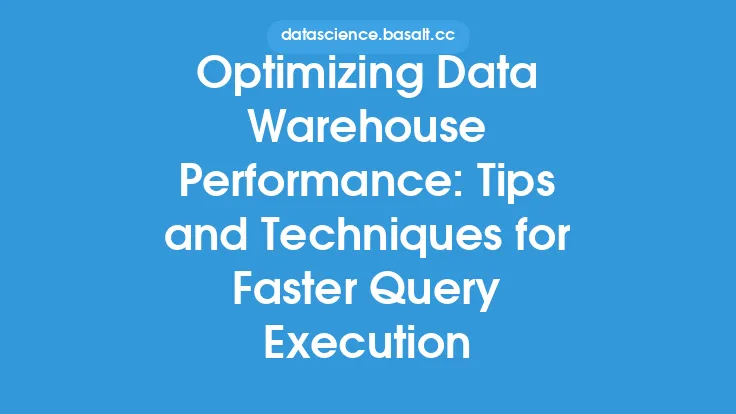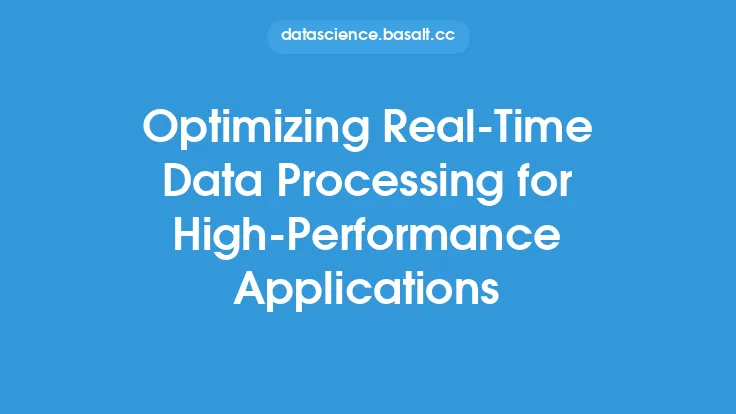Data storage is a critical component of any data governance strategy, as it directly impacts the ability to retrieve and analyze data efficiently. The sheer volume of data being generated today, coupled with the increasing demand for faster and more accurate analysis, has made optimizing data storage a top priority for organizations. In this article, we will delve into the world of data storage, exploring the key considerations and strategies for optimizing data storage to facilitate faster data retrieval and analysis.
Introduction to Data Storage Optimization
Data storage optimization is the process of configuring and managing data storage systems to achieve the best possible performance, capacity, and reliability. This involves a range of activities, from selecting the right storage media and hardware to implementing efficient data management practices and optimizing storage protocols. The goal of data storage optimization is to ensure that data is stored in a way that allows for rapid retrieval and analysis, while also minimizing storage costs and maximizing data integrity.
Understanding Data Storage Media
Data storage media refers to the physical devices or systems used to store data, such as hard disk drives (HDDs), solid-state drives (SSDs), flash drives, and tape drives. Each type of storage media has its own strengths and weaknesses, and selecting the right media depends on factors such as data volume, access frequency, and performance requirements. For example, HDDs are often used for large-scale data storage due to their high capacity and low cost per gigabyte, while SSDs are preferred for applications that require high-speed data access, such as databases and virtual machines.
Data Storage Architectures
Data storage architectures refer to the way in which data is organized and stored across multiple devices or systems. Common storage architectures include direct-attached storage (DAS), network-attached storage (NAS), and storage area networks (SANs). DAS involves connecting storage devices directly to a server or workstation, while NAS and SANs involve connecting storage devices to a network, allowing multiple devices to access the data. The choice of storage architecture depends on factors such as data sharing requirements, performance needs, and scalability requirements.
Data Management Best Practices
Effective data management is critical to optimizing data storage. This involves implementing best practices such as data classification, data deduplication, and data compression. Data classification involves categorizing data based on its importance, sensitivity, and retention requirements, allowing organizations to apply appropriate storage and security policies. Data deduplication involves eliminating duplicate copies of data, reducing storage capacity requirements and improving data retrieval efficiency. Data compression involves reducing the size of data files, making them easier to store and transmit.
Storage Protocols and Interfaces
Storage protocols and interfaces play a critical role in determining the performance and efficiency of data storage systems. Common storage protocols include SATA, SAS, and Fibre Channel, while interfaces such as PCIe and NVMe are used to connect storage devices to servers and workstations. The choice of storage protocol and interface depends on factors such as data transfer rates, latency requirements, and compatibility with existing infrastructure.
Optimizing Data Retrieval and Analysis
Optimizing data retrieval and analysis involves a range of strategies, from indexing and caching to data warehousing and business intelligence. Indexing involves creating a data structure that allows for rapid location and retrieval of specific data elements, while caching involves storing frequently accessed data in a fast, accessible location. Data warehousing involves creating a centralized repository of data, allowing organizations to integrate and analyze data from multiple sources. Business intelligence involves using data analysis and reporting tools to extract insights and meaning from data.
Scalability and Flexibility
Scalability and flexibility are critical considerations in optimizing data storage for faster data retrieval and analysis. This involves selecting storage systems and architectures that can adapt to changing data volumes and performance requirements, such as cloud-based storage and hyperconverged infrastructure. Cloud-based storage allows organizations to scale storage capacity up or down as needed, while hyperconverged infrastructure integrates storage, compute, and networking resources into a single, scalable platform.
Security and Data Integrity
Security and data integrity are essential considerations in optimizing data storage. This involves implementing measures such as encryption, access controls, and data backup and recovery, to protect data from unauthorized access, corruption, or loss. Encryption involves converting data into a secure, unreadable format, while access controls involve restricting access to authorized personnel and systems. Data backup and recovery involve creating copies of data and storing them in a secure, accessible location, allowing organizations to recover data in the event of a disaster or data loss.
Conclusion
Optimizing data storage for faster data retrieval and analysis is a complex, multifaceted challenge that requires careful consideration of a range of factors, from storage media and architectures to data management best practices and storage protocols. By understanding the key considerations and strategies outlined in this article, organizations can create a robust, scalable, and secure data storage infrastructure that supports their data-driven initiatives and drives business success. Whether you are a data scientist, IT professional, or business leader, optimizing data storage is essential to unlocking the full potential of your data and achieving your organizational goals.
